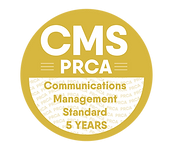Beyond the backstop: What you need to know about public affairs and Northern Ireland
10 September 2019 - by Gráinne WalshThe backstop and all things Brexit remain central to politics on both sides of the Irish Sea. Beyond this, there are also local public policy issues here in Northern Ireland which shows public affairs professionals that there is life (just about) beyond Brexit.
While welfare reform and the introduction of Universal Credit is a UK-wide policy, it has taken on its own particular form in each of the four regions. In a nearly forgotten display of harmony, here in Northern Ireland the Democratic Unionist Party (DUP) and Sinn Féin jointly agreed a package of mitigations for Northern Ireland in 2015.
This unity of purpose stemmed from a shared understanding of the particular characteristics of the region and the legacy of the past – not least of all, the highest rate of economic inactivity in the UK, and the impact that welfare reform would have locally.
All well and good so far; however, the package is due to end in March 2020 and in the absence of a functioning Executive and Assembly, all the signs from the responsible department, the Department for Communities, suggest that it does not have the power to extend Northern Ireland-specific mitigations, bringing us to a cliff edge early next year.
Another issue that is similarly challenged by the absence of political institutions locally is the need for legislation on the reclassification of housing associations in Northern Ireland under Office of National Statistics guidelines.
This legislation, reclassifying housing associations as private sector bodies, has already been brought forward in England, Scotland and Wales. Without legislation forthcoming, housing associations here may face difficulties in accessing funding in the future, leading to drop in the number of affordable homes being delivered.
While the UK Government has pledged in parliament to introduce legislation on two occasions, this has not been progressed to date, and time is quickly running out to bring forward a solution. With stiff competition for parliamentary time, and a now even fewer available slots as a result of the Prime Minister proroguing parliament, who in Westminster is looking after Northern Ireland? Who is providing the scrutiny of policy (non) decisions?
Enter stage left the Northern Ireland Affairs Committee. Its thirteen MPs have been very active, from reviewing funding priorities in the 2018-19 Health and Education Budgets through to tourism, welfare policy and local preparedness for Brexit, the Committee evidence sessions have been the forum for some policy announcements, particularly in health.
However, while this has been a critical vehicle in driving debate and policy conversations, it does not have the authority to unlock many much-needed decisions. The outstanding piece of the jigsaw for issues such as welfare mitigations and housing association reclassification is confirmation of who can make these decisions in politically uncertain times.
So what does this mean for public affairs locally? Twenty-one years after the Belfast Agreement, organisations and businesses who understand the need to engage with government to influence policy and legislation are adopting a hybrid approach to influencing – maintaining a focus on local developments and engaging with decision makers locally to make progress where possible, while at the same time embracing UK institutions to both progress critical NI-specific issues and shape UK-wide policy.
Stratagem’s new partnership with London’s Connect shows a responsiveness in going to where power lies; namely, on both sides of the Irish Sea. Agencies based in Northern Ireland need strong capabilities in Westminster in order to seek change locally. Those based elsewhere in the UK (or the world) need to understand local politics, thanks to the key role our 10 DUP MPs are playing in the Conservative Government. And in challenging times and with decision makers’ time at a premium, all of us need to find ever more creative ways of getting our clients’ messages heard.
This article was originally published on CIPR INFLUENCE.








